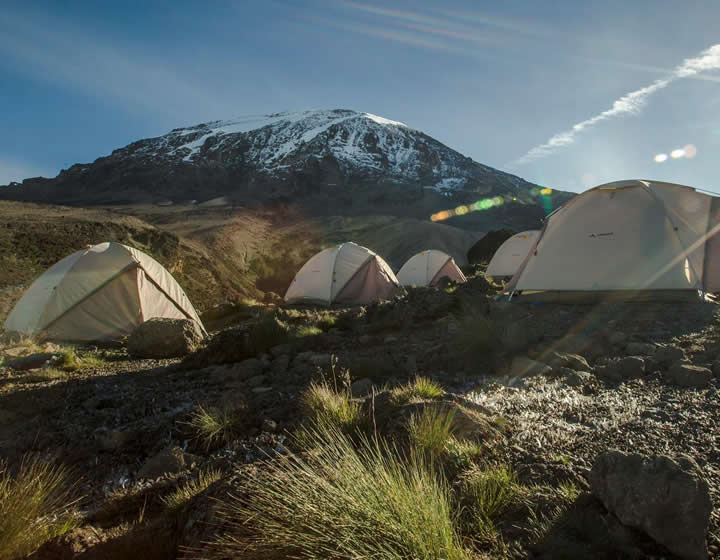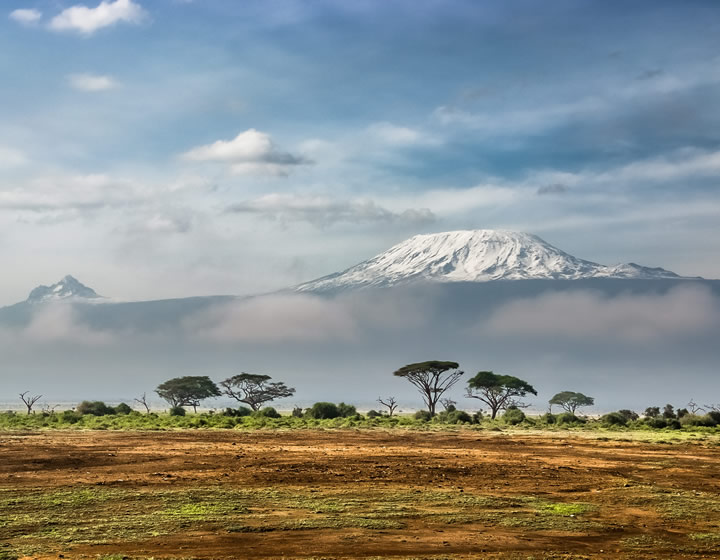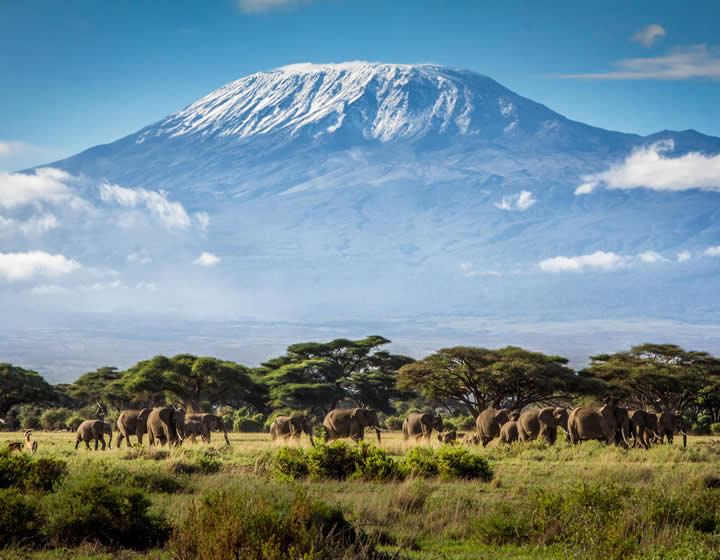Tour overview
Included
- Guarantee price/guarantee trek on confirmation
- Transfer to and from the base of the mountain
- Full board accommodationwhilst on the trek.
- Accommodations in camps/huts as per the itinerary
- All park entrance fees to include government taxes
- Service of an English speaking professional guide, porters and skilled cook
- Treated water on the trek.
- On completion, successful climb Certificate
Not Included
- Laundry, tips, sleeping bags, drinks, accommodation before the trek and climbing gears
- International flights
- Visas to Kenya
- Items of personal nature
- Any other extras not detailed in the above itinerary
Day 1: Nairobi – Arusha/Moshi
Transfer you from Nairobi to Moshi through Arusha.Dinner and overnight stay at Moshi or Arusha.
Day 2: Moshi Marangu Route
The drive from Moshi to the Kilimanjaro National Park gate, takes about 50 minutes. The journey passes through the village of Marangu, which is located on the lower slopes of the mountain. Once you reach the park gate, all hikers are requested to sign in at the Park office and make their final preparations for the climb. Porters will be seen arranging and loading their packs, containing the food, water, cooking gas as well as most of your equipment. Make sure that you have all your daypack items (containing at least drinking water, your lunch pack and extra clothing) with you, as the porters ascend a lot quicker than the hikers.
Our guides will be available to assist with any additional information or needs you might have. You now leave the Park gate and ascend on a cleared ridge trail through the rain forest. The forest, suffused with mist and dripping with beards of moss, is also where most of Kilimanjaro’s animals are found.
An alternative and more scenic parallel forest trail branches off to the left a few minutes after the gate. This trail follows the edge of a stream through the undergrowth and offers you the option to rejoin the main trail either after 1.5 hours hiking, or 1 hour before Mandara hut.
Your first night stop, Mandara hut, consisting of a group of wooden A-framed huts in a forest clearing. Each hut features 6-8 sleeping bunks with solar generated lighting. The total capacity of the camp is 60 climbers. Water is piped into the camp from springs above and there are flush toilets behind the main hut. Dinner is prepared by our cook and served in a communal dining mess. Mandara hut
Day 3: Mandara Hut (2715M) – Horombo Hut (3705M)
From Mandara hut the trail passes through a short stretch of forest, skirts the base of the Maundi Crater and then emerges into the transition from rain forest to moorland. It is well worth a short detour to scramble up the rim of the Maundi Crater for your first really impressive view of the Kibo Crater. On a clear day, Kibo will glimmer in the distance, showing off her majestic glaciers in the morning sun.
Once you are in the open moorland you will get the chance to see some of Kilimanjaro’s most spectacular plants – the endemic giant lobelia which grows up to 3 m in height and the giant groundsel, which can reach heights of 5m! After about 6 hours trek from here, you reach the Horombo hut, where you will have a hot bowl of washing water, rest; an evening meal and overnight.
Day 4: Horombo Hut (3705M) – Kibo Hut (4730M)
After breakfast you now continue your ascent into the Alpine desert habitat. From Horombo there are two trails to the “Saddle” (which refers to the area located between the peaks of Mawenzi and Kibo). There is an upper route (right hand fork) and lower route (left hand fork) to choose from. The upper route (right hand fork) should be very familiar, as you will have climbed most of it the previous day (on your acclimatisation hike) towards Mawenzi hut. This section is very stony and eroded.
The recommended lower route (left hand fork) is much easier and nearly an hour shorter, and it also passes the last watering point at 4130m. You will have to fill your water bottles with all the water you will need until your return to Horombo hut in two night’s time (unless you are willing to buy Mineral water at Kibo hut). Once again remember to slow down and drink enough water!
Hikers inside one of the huts on the MarangurouteSituated in the barren Alpine desert is Kibo hut, a stone build block house which has bunk beds for 60 climbers, but no streams with water nearby. It is however possible to buy mineral water and soft drinks at the camp office. There are platform toilets behind the hut.
The summit is now a further 1195m up and you will make your final ascent the same night. Prepare your equipment, ski-stick and thermal clothing for your summit bid. This should include the replacement of your headlamp and camera batteries and make sure you have a spare set available as well. To prevent freezing it will be wise to carry your water in a thermal flask. Go to bed at round about 19h00 and try to get as much rest and sleep as possible.
Day 5: Kibo Hut (4730M) – Uhuru Peak (5895M) – Horombo Hut (3705M)
You will rise around 23h30, and after some tea and biscuits you shuffle off into the night, and this is where the going really gets tough. The first section of the trail consists of a rocky path to the Hans Meyer Cave (5150m), also a good resting spot. The path then zigzags up to Gillman’s point (5 681m), which is located on the crater rim. This section is very steep with a lot of stone scree, requiring a great physical and mental effort. This is probably the most demanding section of the entire route.
On the way to the summit from Gillman’s Point you will normally encounter snow all the way up to Uhuru peak (5895m), the highest point in Africa. Total exhilaration and satisfaction – you made it. Weather conditions on the summit will determine how long you will be able to spend, taking photographs, before the 3 hour descent back to Kibo hut. After a short rest you gather all your gear you left behind for the ascent and head down to Horombo hut (3 hours) for your overnight. The return to Horombo hut will seem surprisingly fast compared to the ascent. The total time spent walking on this day is around 14 hours, so be prepared for a very tough day. Later in the evening you enjoy your last dinner on the mountain and a well-earned sleep, filled with memories and stirring emotions. Dinner and overnight in Horombo hut.
Day 6: Horombo Hut (3705M) – Mandara(1860M) - Moshi
After breakfast you continue your descent (6 hours), passing the Mandara hut, down to the Marangu gate. This is also where successful climbers receive their summit certificates. Those climbers who reached Gillman’s Point (5685m) are issued with green certificates and those who reached Uhuru Peak (5895m), receive gold certificates. You now drive back to Moshi for a long overdue hot shower. Dinner and overnight in a budget hotel.



